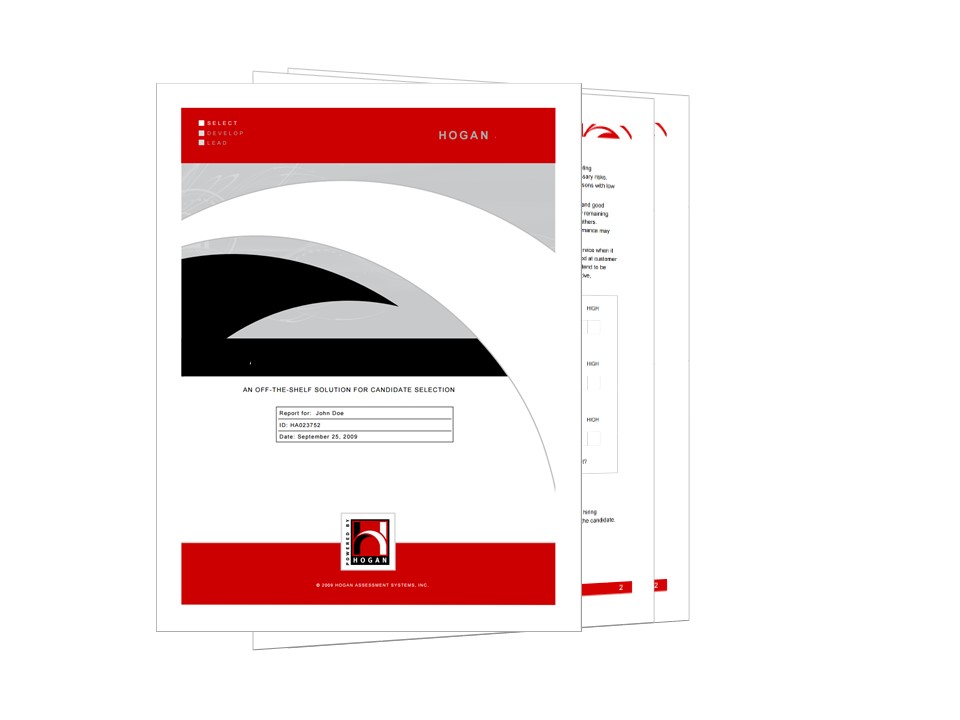Motives, Values, Preferences Inventory (MVPI)
Great companies often point to their culture as a primary reason for their greatness. When you examine an organisation's culture, you will find that it is derived from the values of its leaders and members.
This concept was central in the development of the Motives, Values, and Preferences Inventory. It is the only inventory that assesses individual’s core values and compares them to the existing culture (values) of an organisation.

KEY BENEFITS
The inventory also offers a variety of other unique features:
- Provides a comprehensive, business-based taxonomy of values
- Evaluates the fit between a person's values and an organisation's culture
- Designed to predict occupational success and satisfaction
- Can be used for selection or development
- Can also be used to describe the work environment a leader will create
- Based on a comprehensive theory of personality
- Developed exclusively on working adults
- Validated in over 100 organisations
- No invasive or intrusive items
WHAT DOES THE MVPI MEASURE?
The Motives, Values, Preferences Inventory (MVPI) reveals a person's core values. It identifies what a person wants to do rather than what a person may do in certain situations. These values are assessed on 10 scales:

Primary Scales
- Recognition – Value being known,recognised, appreciated, and famous
- Power (Competition) – Value being in control, succeeding, and outperforming the competition
- Hedonistic (Fun) – Value fun, variety, excitement, and pleasure
- Altruistic (Service) – Value helping, serving, and encouraging others
- Affiliation (Team) – Value frequent and varied social contact
- Tradition – Value family, devotion to duty, hard work, and respect for authority
- Risk Tolerance (Security) – Value predictability, structure, and order
- Commercial (Finance) – Value money, reducing expenses, realising profits, and business opportunities
- Aesthetic (Quality) – Value the look, feel, and design of work products and a dedication to quality
- Scientific (Problem Solving) – Value science, technology, and making data-based decisions

TECHNICAL FACTS

The MVPI contains 200 items that are keyed agree, uncertain, or disagree. The items have been carefully reviewed for invasive or intrusive content and to ensure the inventory has no adverse impact on race/ethnicity or gender. The total completion time is 15 to 20 minutes with a 5 th grade reading level.
Each scale is composed of five themes: (a) Lifestyles, which concern the manner in which a person would like to live; (b) Beliefs, which involve “should”, ideals, and ultimate life goals; (c) Occupational Preferences, which include the work an individual would like to do, what constitutes a good job, and preferred work materials; (d) Aversions, which reflect attitudes and behaviours that are either disliked or distressing; and (e) Preferred Associates, which include the kind of persons desired as co-workers and friends. These themes form the foundation for understanding the value structure of an individual.
The initial norms for the inventory were based on the responses of 10,000 employed adults from a variety of industries including health care, banking and finance, food service, construction, and transportation. More than 200,000 people have completed the MVPI over the past 10 years and it continues to be used as the primary tool for assessing values in hundreds of organizations throughout the world.
MVPI scores are quite stable over time, with test-retest reliabilities ranging between .64 and .88 (mean = .79). More than 100 validation studies have been conducted on the MVPI with results indicating that the inventory is very effective in predicting job performance and outcome variables such as turnover. In particular, the data indicate that it is a robust predictor in sales and managerial positions where value orientations often strongly influence performance (e.g., high performing sales personnel often score high on the “Finance Scale” and that value is manifested on-the-job as a strong interest in the financial returns for their company and themselves).
REPORTS FOR PROJECTS
Leadership Forecast Series – Values
The Leadership Forecast Series – Values primarily used in a development context. The report provides and in-depth evaluation of potential career derailers and individual values. The report includes graphic and numerical scores of the individual as well as comprehensive narratives comparing the scores with Australian executives with similar profiles.
Interpretive Report
The Interpretive Report is primarily used for selection decisions. The report includes a description for each of the 10 scales as well as numerical scores and graphic presentations. In addition the report includes an interpretation of the behavioural implications for each scale.
Basis Report
The Basis Report is primarily used for selection decisions. The report includes a description of each of the 10 scales as well as graphical and numerical scores. The report also includes a comparison with important job fit criteria as well as a comprehensive description of the candidate’s strength and areas of concern.
MVPI RESOURCES & SAMPLE REPORTS

- Author: Hogan
- Time: Approximately 20 minutes

